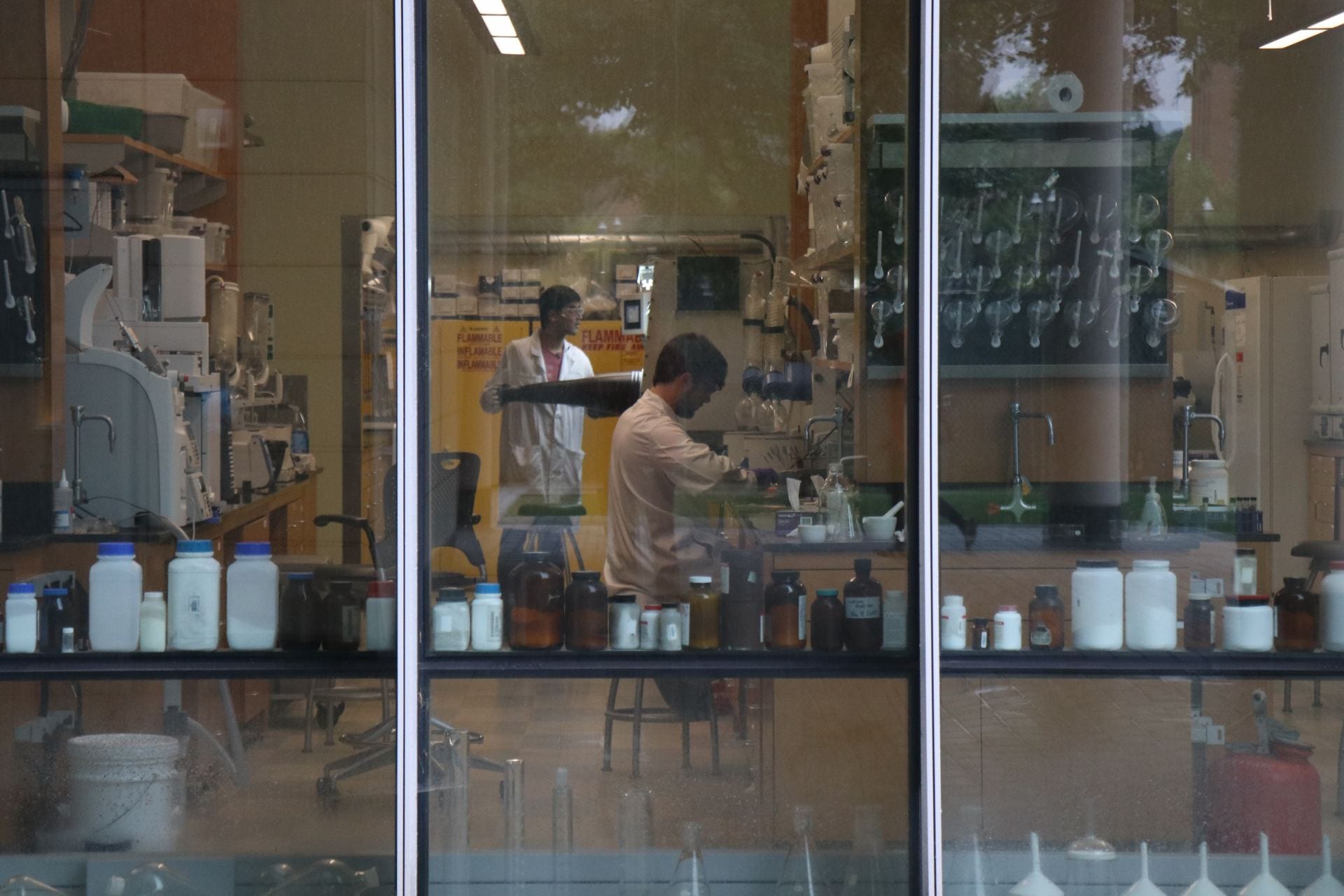
Students experiment in Koffolt Lab, home to the Department of Chemistry and Biochemistry Research, as well as the Department of Chemical and Biomolecular Engineering. Credit: Casey Cascaldo | Photo Editor
With a shared and continuing grant from the National Science Foundation, Ohio State and nine other Ohio universities have committed to growing the number of minority students in STEM fields and in boosting their long-term career development over the next five years.
The renewed grant, a total of $4.5 million, is the largest ever to be awarded to the Louis Stokes Alliances for Minority Participation Program at Ohio State, compared with the $3.5 million grant the alliance first obtained in 2013.
In the past, there have been a lack of opportunities for minority students to get into STEM areas and acquire professional training, which has led to a decline in enrollment of underrepresented students, said James L. Moore III, vice provost for Office of Diversity and Inclusion and the chief diversity officer at Ohio State.
Barbara Fink, director of Ohio LSAMP Alliance, said the job market at Ohio State needs more minority students from STEM majors to fill those vacant shoes.
“We need to have the different groups with different ideas in order to make progress in STEM areas,” Fink said.
The financial aid is mainly used to develop new programs, such as bridge courses that help students transition to taking advanced classes for the first time, undergraduate research programs, peer and faculty tutoring to encourage minority participation on research and help with any learning barrier.
“Sometimes when students get into the university, they may find out some of their deficiency in math courses and then do a non-STEM major,” Fink said. “So our mathematics curriculum is to help make sure the math is not a barrier to minorities in STEM areas.”
Along with academic guidance, a part of the grant serves as a stipend for students who complete all required courses and activities. Fink said the stipend might be reduced if students don’t meet all the requirements, and that “what they have to do for the stipend varies.”
The LSAMP alliance keeps records of progress every year so that it can ensure every student in the program keeps up with academic schedules. Moore has also said the alliance has gained significant success in its first five years.
“By 2016, LSAMP institutions were awarding more than twice as many underrepresented minority student STEM degrees than they were in 2011,” Moore said. “So we know this program works.”


